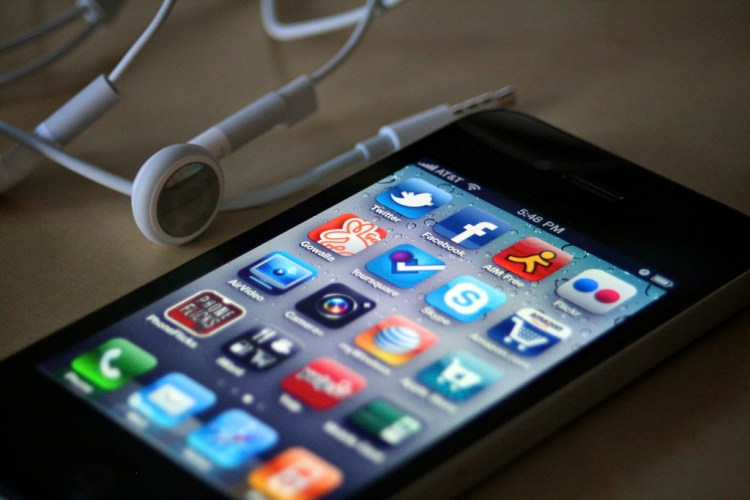When will a big winner emerge in the mobile personal productivity market?
App stores are littered with calendars, task managers, and other time management tools, but none of these apps have hit the big time yet. There are plenty of other successes in the mobile world — games and social apps are the obvious ones. In the utility space, apps from Dropbox/Box, Gmail, Evernote are hugely popular and a critical part of their respective company’s revenue and distribution strategies.
However, the personal productivity space hasn’t yet reached its full potential on mobile. Why?
One of the unique challenges of personal productivity apps on app stores is that they compete with pre-loaded apps that are already on the phone. For example, Apple and Google both offer free calendar, task manager, and notes apps on their mobile operating systems. None of these apps offer the depth of functionality that their app store competitors do, but they retain market share because they’re free, pre-installed and often come with special features that require permissions that downloadable apps don’t have (like Apple’s Calendar’s app icon which changes daily to show the current date).
We’ll be exploring how predictive tech is empowering mobile productivity apps at MobileBeat in San Francisco on July 8-9.
Plenty of companies, including my own, Mynd, are attempting to overcome the entrenched pre-loaded personal productivity apps by introducing “smart,” predictive technology into their productivity experiences. [Check out VentureBeat’s roundup of the best 5 iPhone smart calendar apps.]
Those of us that have demonstrated initial signs of success are focused on creating experiences that wow users with the expectation that revenue will follow.
The potential of the mobile personal productivity space is huge. Flurry recently reported that consumers spent 119% more time in productivity apps this year than they did the year before. And, Gartner predicts that global app revenues will reach $26B this year. Those are compelling numbers for personal productivity companies and investors, but overcoming an entrenched pre-loaded app is far from easy. It requires blending jaw-dropping functionality, with exceptional value, platform ubiquity and viral marketing.
I’ve spent a lot of time thinking about what the next mega-hit in the personal productivity space will look like. Here are the top ten things I think big winner in this space will need to do to succeed in the short, medium and long term:
- The winning app cannot just be 3 or 4 times better than the apps that come pre-installed on the phone. It must have a magical quality that makes it so much better than pre-installed apps that it pulls users away from their easiest choice. It needs to provide amazing value and be so sticky that it immediately embeds deeply in the daily work and personal lives of its users.
- It must solve people’s time management and productivity problems in a comprehensive way. A great feature or two alone does not make a great productivity product. It must be an end-to-end solution.
- It must strike an effective balance between immediate utility (being better than built in apps) and long-term vision (anticipating where the market is going and beating the incumbents to the punch in delivering new and powerful features).
- It needs to have an impressive growth engine. To get into millions of user’s hands, it needs to deliver value quickly and contain a viral hook that drives discovery and word of mouth downloads. Simply putting a great app in an app store isn’t enough.
- It has to be available on every screen. Mobile is perhaps the most valuable place to start since users want to be productive on the go. However, users also expect to see their data wherever and whenever they want, so supporting other mediums like tablets, PCs, the web, and the most popular wearable and conncected devices is key.
- It must do what the incumbents don’t do very well — work seamlessly across operating systems, making it easy for people to share information and interact with each other even if they’re not using the same type of phone, tablet, etc.
- It must truly understand its users. It will leverage machine learning and data science to deliver a truly intelligent service that anticipates and reacts to both users’ intent and their unspoken needs.
- It will seek out a broad variety of sensory data to gain a more comprehensive understanding of how its users spend their time and where they can become more productive. It will be able to consume and synthesize critical data from internal means as well as external sensors and third party APIs (including fitness trackers, sleep trackers and more) to understand how users are spending their time and recommend ways for them to become more efficient.
- It will become an open platform that enables efficient delivery of users’ favorite media content and services to them when and where they need it. It will, for example, anticipate when a user has free time to catch up on his/her favorite magazine or book and deliver that content to him/her in an easy-to-access format.
- It will have sufficient financial backing to ensure that it can secure the resources required to innovate and scale quickly, but it will spend wisely to ensure it doesn’t botch its growth trajectory.
Max Wheeler is the CEO of Mynd.
VentureBeat's mission is to be a digital town square for technical decision-makers to gain knowledge about transformative enterprise technology and transact. Learn More

